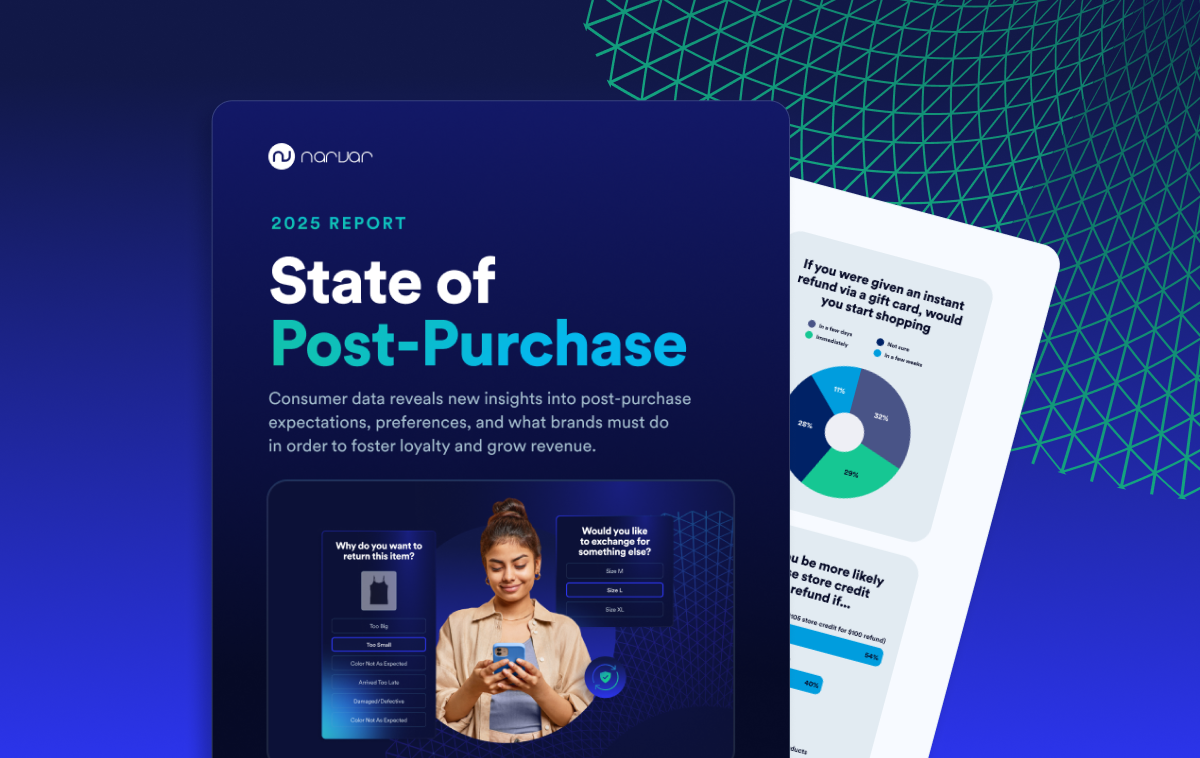
AI-powered delivery date estimates to boost conversion
Give shoppers peace of mind and protect and grow your bottom line
Personalized tracking experiences to build brand loyalty
Returns and exchanges management to mitigate fraud and reward best customers
Proactive communication to drive customer lifetime value
Delivery claim management to tackle fraud and build trust
Optimizing retail returns in the face of rising tariffs

With the threat of tariffs fast approaching, retailers are bracing for a surge in overall costs. One of the most immediate areas of impact will be the cost of goods sold, prompting many retailers to rethink their operational efficiencies—including their returns programs. While it may seem that the most straightforward way to mitigate costs is to opt for the cheapest returns solutions, retailers must be careful not to sacrifice inventory optimization in the process.
A strategic approach to reverse logistics is more critical than ever. The same principles that drive personalized return policies for consumers should also shape a retailer’s reverse logistics network. Not all goods are created equal, and in a market where inventory scarcity may soon become a reality, optimizing the returns process to align with business needs is a powerful tool for ensuring operational efficiency.
Prioritizing Inventory Returns Based on Business Needs
Not every item needs to be rushed back to inventory. For example, retailers likely have a surplus of inventory for essential items, like socks or basic t-shirts. Slowing down these return shipments through cost-effective programs, such as the Narvar Concierge Network, can help retailers save up to 40% on logistics expenses while maintaining a seamless customer experience.
On the other hand, high-demand fashion items or seasonal products require a different approach. The potential for inventory to remain stuck at the border due to tariff-related delays makes it even more critical to retrieve these products swiftly. Expedited return services ensure that these goods re-enter inventory as quickly as possible, maintaining availability and maximizing resale potential.
Balancing Cost Savings and Speed
The best retailers will go beyond merely cutting costs. They will strategically balance speed and savings in their returns program. This involves a multi-tiered approach where products are categorized based on their return urgency and financial impact:
- Low-priority returns: Standard return shipping for evergreen products that don’t require immediate replenishment.
- High-priority returns: Expedited return processes for high-demand and time-sensitive inventory.
- Alternative return solutions: Leveraging third-party return programs that optimize cost without sacrificing efficiency.
By segmenting returns based on inventory needs, retailers can create a reverse logistics strategy that is both cost-effective and operationally intelligent.The Competitive Advantage of Smarter Reverse LogisticsIn a retail landscape where margins are tighter than ever, the ability to adapt and optimize logistics will define market leaders. Those who take a one-size-fits-all approach to returns will likely find themselves burdened with unnecessary expenses or, worse, inventory shortages that stifle sales.Retailers who implement an optimized reverse logistics strategy will not only reduce costs but also maintain inventory flow, ensuring that high-demand products remain available while less urgent items are processed more economically. This strategic balance of speed and savings will enable retailers to stay agile in an increasingly uncertain market.
The Competitive Advantage of Smarter Reverse Logistics
In a retail landscape where margins are tighter than ever, the ability to adapt and optimize logistics will define market leaders. Those who take a one-size-fits-all approach to returns will likely find themselves burdened with unnecessary expenses or, worse, inventory shortages that stifle sales.
Retailers who implement an optimized reverse logistics strategy will not only reduce costs but also maintain inventory flow, ensuring that high-demand products remain available while less urgent items are processed more economically. This strategic balance of speed and savings will enable retailers to stay agile in an increasingly uncertain market.


Related posts





















